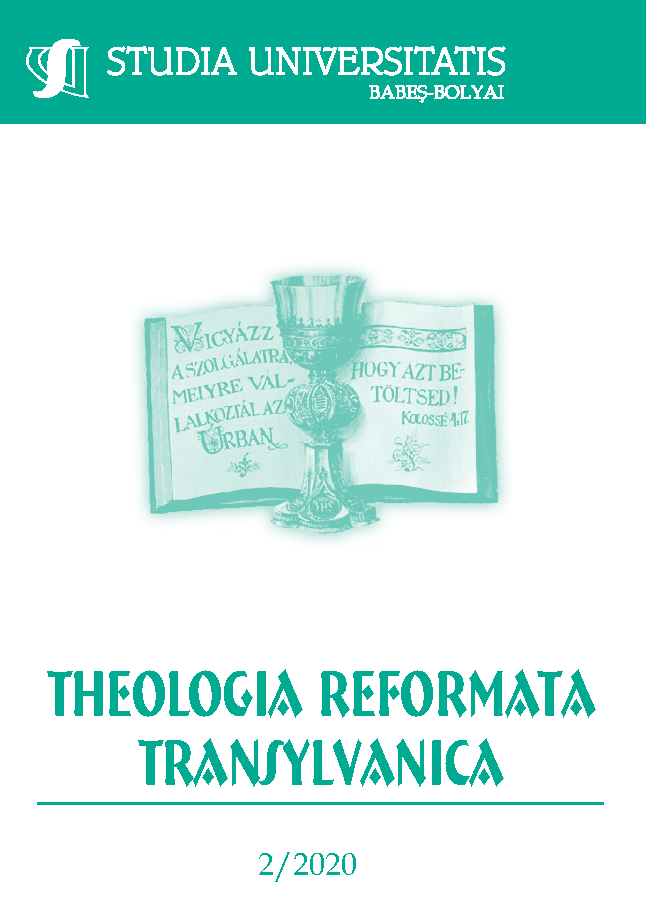The Situation of Catholic Instruction in Transylvania during the Communist Takeover
DOI:
https://doi.org/10.24193/subbtref.65.2.02Keywords:
Márton Áron, Diocese of Transylvania, confessional religious education, communism, nationalization of catholic schools, Catholic Church in Romania in 1948.Abstract
In less than one year, the Catholic Church, just like the other denominations, lost its school network built along the centuries. This was the moment when the bishop wrote: “No one can resent if we shed tears over the loss of our schools and educational institutions”. Moreover, he stated that he would do everything to restore the injustice since they could not resent if we used all the legal possibilities and instruments to retrieve our schools that we were illegally dispossessed of. Furthermore, he evaluated the situation realistically and warned the families to be more responsible. He emphasized the parents’ responsibility. First and foremost, the mother was the child’s first teacher of religion. She taught him the first prayers; he heard about God, Jesus, the Virgin Mary, and the angels from his mother for the first time. He asked for the mothers’ and the parents’ support also in mastering the teachings of the faith. Earlier, he already instructed the priests to organize extramural biblical classes for the children and youth. At this point, he asked the families to cooperate effectively, especially to lead an ardent, exemplary religious life, so that the children would grow up in a religious and moral life according to God’s will, learning from the parents’ examples. And just as on many other occasions throughout history, the Catholic Church started building again. It did not build spectacular-looking churches and schools but rather modest catechism halls to bring communities together. These were the places where the priests of the dioceses led by the bishop’s ex-ample and assuming all the persecutions, incessantly educated the school children to the love of God and of their brethren, and the children even more zealously attended the catechism classes, ignoring their teachers’ prohibitions.References
*** A sepsiszentgyörgyi Székely Mikó Kollégium tanári kara a Népi Demokrácia Frontjáért és az alkotmánytervezetért. In: Népújság 14 March 1948.
*** Constituţia Republicii Populare Române din 1948. In: Monitorul Oficial 87 bis/ 13 aprilie 1948.
*** Egyhangúlag állást foglaltak a felekezeti iskolák államosítása mellett a görgényi egyházme-gye papjai. In: Világosság, 10 April 1948.
*** Jelentés a Gyulafehérvári Latin Szertartású Róm[ai] Kat[holikus] Egyházmegyei Tanács 1946. november hó 28-ikára összehívott közgyűlésére (a továbbiakban Jelentés 1946). Kolozs-vár, Lengyel Albert Könyvnyomdája, 1946.
*** Márton Áron püspök levele a kultuszminiszternek, 4347– 30 March 1948. In: Marton, József (ed.): Márton Áron: Egyház–Állam (Márton Áron hagyatéka – 13). Miercurea Ciuc, Pro-Print. 2016. 109–112.
BALOGH, Edgár (1986): Férfimunka. Emlékirat 1945–1955. Budapest, Magvető.
BÁNYAI, László (1951): Népi demokráciánk vívmányai az együttlakó nemzetiségek anyanyelvű iskoláztatása terén. In: Romániai Magyar Szó V, 1313 (29 December). 2.
BENDE, Béla (1948): A felekezeti iskolák államosításának előnyei. In: Romániai Magyar Szó II, 150 (4 April). 4. (csíki) (1948): A tanügyi reform nyomán dolgozók gyermekei készülnek az életre a brassói volt katolikus főgimnáziumban. In: Igazság 22 August.
CSŐGÖR, Lajos (1948): Haladó szellemű nevelést! In: Romániai Magyar Szó II, 150 (4 April). 3.
DELETANT, Dennis (2001): Teroarea comunistă în România. Gherghiu-Dej şi statul poliţie-nesc, 1948–1965. Iaşi, Polirom.
FEJÉR Pál (1948): A tanügyi reform. In: Romániai Magyar Szó II, 154 (9 April). 4.
GAÁL, Gábor (1948): A felekezeti iskolák államosításáról. In: Utunk III, 6 (46 – 31 March). 1.
HADHÁZY, Sándor (1948): Bizalommal és megértéssel. In: Világosság 28 March.
HOLLÓ, László (2009): A világiak által „vezetett” egyházmegye. vol. I. Cluj-Napoca: Kolozsvári Egyetemi Kiadó. (2016): Az Erdélyi Római Katolikus Státus tegnap, ma és holnap. In: Holló, László (ed.): Gyárfás Elemér a „civil püspök”. A Gyárfás Elemér halálának 70. évfordulója alkalmából tartott emlékkonferencia előadásai. Budapest–Cluj-Napoca, Szent István Társulat–Verbum.
KACSÓ, Sándor (1948): Egységes népoktatást követel a népi demokrácia. In: Világosság 23 March.
LUKÁCS, Olga (2017): Erdélyi felekezetközi viszonyok a kommunista rendszer első évtizedében. In: Lönhárt, Tamás – Nagy, Róbert Miklós – Hunyadi, Attila-Gábor (eds.): Modernizare economică, socială și spirituală în Europa Est-Centrală. Gazdasági, társadalmi és szellemi modernizáció Kelet-Közép-Európában. In honorem Prof. Univ. Dr. Csucsuja István. Kolozsvár/Cluj-Napoca, Argonaut. 226–235.
MARTON, József (2008): Az erdélyi katolicizmus 90 éve (1900–1990). Cluj-Napoca, Kolozsvári Egyetemi Kiadó.
MÁRTON, Áron (1939/40): Az Egyház és a nevelés. In: Erdélyi Iskola 7, 1–2. 1–5. (2015a): 50–1947: Újévi körlevél, 6 January 1948. In: Marton, József (ed.): Márton Áron: Körlevelek – 2. 18–28. (2015b): 4708–8 August 1948. A hitoktatás megszervezéséről. In: Marton, József (ed.): Márton Áron: Körlevelek – 2 (Márton Áron hagyatéka – 12), Miercurea Ciuc, Pro-Print. 43–46. (2015c): 4708–15 September 1948. Körlevél a katolikus iskolák államosításáról és a szülők kötelességéről. In: Marton, József (ed.): Márton Áron: Körlevelek – 2. 49–51. (2016): 4192/24 March 1948: Levél Kacsó Sándornak, a Magyar Népi Szövetség elnökének. In: Marton, József (ed.): Márton Áron: Egyház – Állam, (Márton Áron hagyatéka – 13). Miercurea Ciuc, Pro-Print. 104–109.
MIRCEA, Alexandru – CÂRNAŢIU, Pamfil – TODERICIU, Mircea (1998): Calvarul Bisericii Unite. In: Biserica Română Unită două sute cincizeci de ani de istorie. Cluj-Napoca, Casa de Editură Viaţa Creştină (published online).
http://www.bru.ro/wp-content/uploads/file/pdf/Madrid1.pdf;
http://www.bru.ro/wp-content/uploads/file/pdf/Madrid2.pdf;
http://www.bru.ro/wp-content/uploads/file/pdf/Madrid3.pdf (last accessed: 15.04.2020).
Monitorul Oficial nr. 62, 2 March 1948.
Monitorul Oficial nr. 175, 3 August 1948.
Monitorul Oficial nr. 176, 3 August 1948.
Păiuşan, Cristina – Ion, Narcis Dorin – Retegan, Mihai (2002): Regimul comunist din Româ-nia. O cronologie politică (1945–1989). Bucharest, Tritonic.
(p.i.) (1948): A „pásztor” ismét elárulta nyáját. In: Romániai Magyar Szó II, 381 (4 Decem-ber). 5.
TEMPFLI, Imre (2002): Sárból és napsugárból. Pakocs Károly püspöki helynök élete és kora 1892–1966. Budapest, Metem.
Downloads
Published
How to Cite
Issue
Section
License
Copyright (c) 2020 Studia Universitatis Babeș-Bolyai Theologia Reformata Transylvanica

This work is licensed under a Creative Commons Attribution-NonCommercial-NoDerivatives 4.0 International License.



